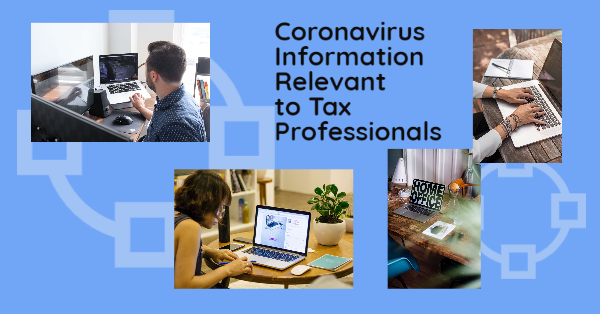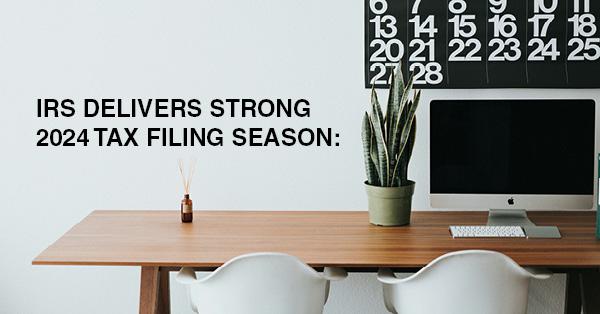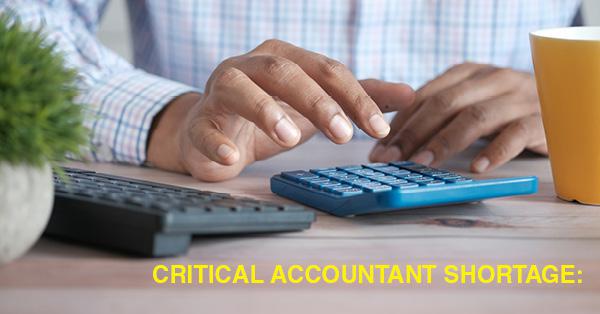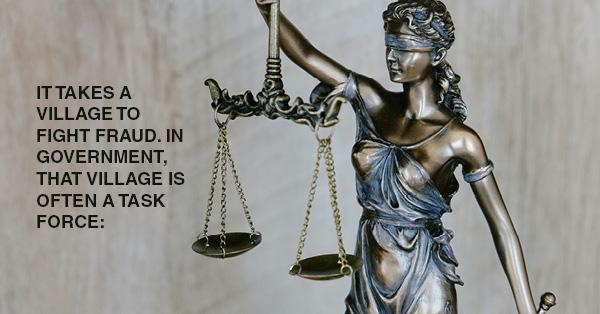Coronavirus Information Relevant to Tax Professionals

As of this writing there are two provisions to help American businesses and their employees as a result of the coronavirus. The first action was introduced by the U.S. Small Business Administration (SBA) to provide disaster loans to small business. Subsequently, The Families First Coronavirus Response Act was passed by Congress and signed into law by President Trump. There is another bill currently working its way through Congress and we will provide information once it has passed through both Houses of Congress and has been signed by the President.
SBA Offers Disaster Assistance to Small Businesses Economically Impacted by the Coronavirus (COVID-19)
The U.S. Small Business Administration is offering low-interest federal disaster loans for working capital to small businesses suffering substantial economic injury as a result of the Coronavirus (COVID-19), SBA Administrator Jovita Carranza has announced. SBA acted under its own authority, as provided by the Coronavirus Preparedness and Response Supplemental Appropriations Act that was recently signed by the President. The governor of each state must apply for this relief, which most states have already processed. A complete listing of those states approved for relief is available here.
“SBA is strongly committed to providing the most effective and customer-focused response possible to assist small businesses with federal disaster loans. We will be swift in our efforts to help these small businesses recover from the financial impacts of the Coronavirus (COVID-19),” said Administrator Carranza.
SBA Customer Service Representatives will be available to answer questions about SBA’s Economic Injury Disaster Loan program and explain the application process.
“Small businesses, private non-profit organizations of any size, small agricultural cooperatives and small aquaculture enterprises that have been financially impacted as a direct result of the Coronavirus (COVID-19) since January 31, 2020, may qualify for Economic Injury Disaster Loans of up to $2 million to help meet financial obligations and operating expenses which could have been met had the disaster not occurred,” said Carranza.
“These loans may be used to pay fixed debts, payroll, accounts payable and other bills that can’t be paid because of the disaster’s impact. Disaster loans can provide vital economic assistance to small businesses to help overcome the temporary loss of revenue they are experiencing,” Carranza added.
Eligibility for Economic Injury Disaster Loans is based on the financial impact of the Coronavirus (COVID-19). The interest rate is 3.75 percent for small businesses. The interest rate for private non-profit organizations is 2.75 percent. SBA offers loans with long-term repayments in order to keep payments affordable, up to a maximum of 30 years and are available to entities without the financial ability to offset the adverse impact without hardship.
Applicants may apply online, receive additional disaster assistance information and download applications at https://disasterloan.sba.gov/ela. Applicants may also call SBA’s Customer Service Center at (800) 659-2955 or email disastercustomerservice@sba.gov(link sends e-mail) for more information on SBA disaster assistance. Individuals who are deaf or hard‑of‑hearing may call (800) 877-8339. Completed applications should be mailed to U.S. Small Business Administration, Processing and Disbursement Center, 14925 Kingsport Road, Fort Worth, TX 76155.
The deadline to apply for an Economic Injury Disaster Loan is December 21, 2020.
For more information about Coronavirus, visit: Coronavirus.gov.
For more information about available SBA resources and services, visit: SBA.gov/coronavirus.
Families First Coronavirus Response Act
The President has signed the Families First Coronavirus Act (HR 6201, the "Act") intended to ease the economic consequences stemming from the novel coronavirus disease (COVID-19) outbreak by providing family and medical leave, and sick leave, to employees and providing tax credits to employers and self-employeds providing the leave. The Act also affects employer-sponsored health plans.
Key Takeaways
- Paid Sick Leave for Workers
- For COVID-19 related reasons, employees receive up to 80 hours of paid sick leave and expanded paid child care leave when employees’ children’s schools are closed or child care providers are unavailable.
- Complete Coverage
- Health insurance costs are also included in the credit.
- Employers face no payroll tax liability.
- Self-employed individuals receive an equivalent credit.
- Employers receive 100% reimbursement for paid leave pursuant to the Act.
- Fast Funds
- An immediate dollar-for-dollar tax offset against payroll taxes will be provided
- Where a refund is owed, the IRS will send the refund as quickly as possible.
- Reimbursement will be quick and easy to obtain.
Prompt Payment for the Cost of Providing Leave
When employers pay their employees, they are required to withhold from their employees’ paychecks federal income taxes and the employees' share of Social Security and Medicare taxes. The employers then are required to deposit these federal taxes, along with their share of Social Security and Medicare taxes, with the IRS and file quarterly payroll tax returns (Form 941 series) with the IRS.
Under guidance that will be released next week, eligible employers who pay qualifying sick or child care leave will be able to retain an amount of the payroll taxes equal to the amount of qualifying sick and child care leave that they paid, rather than deposit them with the IRS.
The payroll taxes that are available for retention include withheld federal income taxes, the employee share of Social Security and Medicare taxes, and the employer share of Social Security and Medicare taxes with respect to all employees.
If there are not sufficient payroll taxes to cover the cost of qualified sick and child care leave paid, employers will be able file a request for an accelerated payment from the IRS. The IRS expects to process these requests in two weeks or less. The details of this new, expedited procedure will be announced next week.
Examples
If an eligible employer paid $5,000 in sick leave and is otherwise required to deposit $8,000 in payroll taxes, including taxes withheld from all its employees, the employer could use up to $5,000 of the $8,000 of taxes it was going to deposit for making qualified leave payments. The employer would only be required under the law to deposit the remaining $3,000 on its next regular deposit date.
If an eligible employer paid $10,000 in sick leave and was required to deposit $8,000 in taxes, the employer could use the entire $8,000 of taxes in order to make qualified leave payments and file a request for an accelerated credit for the remaining $2,000.
Equivalent child care leave and sick leave credit amounts are available to self-employed individuals under similar circumstances. These credits will be claimed on their income tax return and will reduce estimated tax payments.
The Details
Emergency Paid Sick Leave Act requires private employers that employ fewer than 500 employees and public employers to provide an additional 80 hours of emergency paid sick leave (E-PSL) to full time employees who are unable to work or telework for certain reasons related to the coronavirus ("CV19") outbreak. Part-time employees must be provided E-PSL for the average number of hours they would work over a two-week period. Employers will receive a tax credit against payroll social security taxes for E-PSL payments made. This amount is immediately available regardless of the employee's length of employment. The maximum amounts payable vary based on the reason for absence.
- The employee is subject to a federal, state, or local quarantine or isolation order related to CV19. Pay is at the greater of the employee's regular rate or applicable minimum wage but capped at $511 per day and $5,110 in the aggregate.
- The employee has been advised by a health care provider to self-quarantine because of CV19 concerns. Pay is at the greater of the employee's regular rate or applicable minimum wage but capped at $511 per day and $5,110 in the aggregate.
- The employee chooses to obtain a medical diagnosis because the employee is experiencing symptoms of CV19. Pay is at the greater of the employee's regular rate or applicable minimum wage but capped at $511 per day and $5,110 in the aggregate.
- The employee is caring for or assisting an individual who is subject to an order or recommendation as described in 1 or 2 above. Pay is at two-thirds of the greater of the employee's regular rate or applicable minimum wage but capped at $200 per day and $2,000 in the aggregate.
- The employee is caring for the employee's child because of school or daycare closure, or because the child care provider is unavailable, due to CV19. Pay is at two-thirds of the greater of the employee's regular rate or applicable minimum wage but capped at $200 per day and $2,000 in the aggregate.
- The employee is experiencing any other substantially similar condition specified by Human Health Services. Pay is at two-thirds of the greater of the employee's regular rate or applicable minimum wage but capped at $200 per day and $2,000 in the aggregate.
The new law will be effective on April 2, 2020 (15 days after it is signed by the President) and will expire on December 31, 2020. E-PSL will be available for immediate use to all employees regardless of tenure, but no unused E-PSL will carry over to 2021. There is no requirement to cash out E-PSL on separation of employment.
Family and medical leave. The Act includes the Emergency Family and Medical Leave Expansion Act (EFMLEA), which requires employers with fewer than 500 employees to provide both paid and unpaid public health emergency leave to certain employees through December 31, 2020. The emergency leave generally is available when an employee who has been employed for at least 30 days is unable to work or telework due to a need for leave to care for a son or daughter under age 18 because a school or place of care has been closed, or a childcare provider is unavailable, due to an emergency with respect to COVID-19 that is declared by a federal, state, or local authority. The first 10 days of leave may be unpaid and then paid leave is required, calculated based on an amount not less than two-thirds of an employee's regular rate of pay and the number of hours the employee would otherwise be normally scheduled to work, not to exceed $200 per day and $10,000 in the aggregate. Certain exemptions and special rules apply, and a tax credit may be available.
The Family and Medical Leave Act is an additional extension of time after the first 10 days:
- The EMFLEA credit for each employee is the amount of his leave pay limited to $200 per day with a maximum of $10,000.
- The amount of the EPSLA and EMFLEA credits are increased by the portion of the employer's "qualified health plan expenses" that are properly allocable to qualified sick leave wages or qualified family and medical leave wages. Qualified health plan expenses means amounts paid or incurred by the employer to provide and maintain a group health plan, but only to the extent that such amounts are excluded from the gross income of employees by reason of Code Sec. 106(a).
- In addition, the credits allowed to employers for wages paid under the EPSLA and EFMFLEA are increased by the amount of the tax imposed by Code Sec. 3111(b) (the 1.45% hospital insurance portion of FICA) on qualified sick leave wages, or qualified family leave wages, for which credit is allowed under Act Sec. 7001 or Act Sec. 7003.
The credits are refundable to the extent they exceed the employer's payroll tax.
Employers don't receive the credit if they're also receiving the credit for paid family and medical leave in Code Sec. 45S.
These rules apply only to wages paid with respect to the period beginning on a date selected by the Secretary of the Treasury which is during the 15-day period beginning on the date of the enactment of the Act (March 18, 2020) and ending on December 31, 2020.
Comparable credits for self-employeds. The Act also provides for similar refundable credits against the self-employment tax. It covers 100% of a self-employed individual's sick-leave equivalent amount, or 67% of the individual's sick-leave equivalent amount if they are taking care of a sick family member or taking care of a child following the child's school closing for up to 10 days. The sick-leave equivalent amount is the lesser of average daily self-employment income or either
- $511/day to care for the self-employed individual or
- $200/day to care for a sick family member or child following a school closing, paid under the EPSLA. (Act Sec. 7002)
Self-employed individuals can also receive a credit for as many as 50 days multiplied by the lesser of $200 or 67% of their average self-employment income paid under the EMFLEA. (Act Sec. 7004)
These rules apply only to days occurring during the period beginning on a date selected by the Secretary of the Treasury, which is during the 15-day period beginning on the date of the enactment of this Act (March 18, 2020) and ending on December 31, 2020. (Act Sec. 7002 and Act Sec. 7004)
- Employer FICA exclusion. Wages paid under the EPSLA and EFMFLEA are not considered wages under Code Sec. 3111(a) (employer tax - old age, survivors and disability insurance portion of FICA; 6.2%) or under Code Sec. 3221(a) (employer's railroad retirement tax). (Act Sec. 7005(a))
IRS central website. The IRS website has a coronavirus webpage focused on steps to help taxpayers, businesses and others affected by the coronavirus.
Tax Court. The Tax Court has canceled March and April 2020 sessions. See the March 11 and March 13 press releases.




